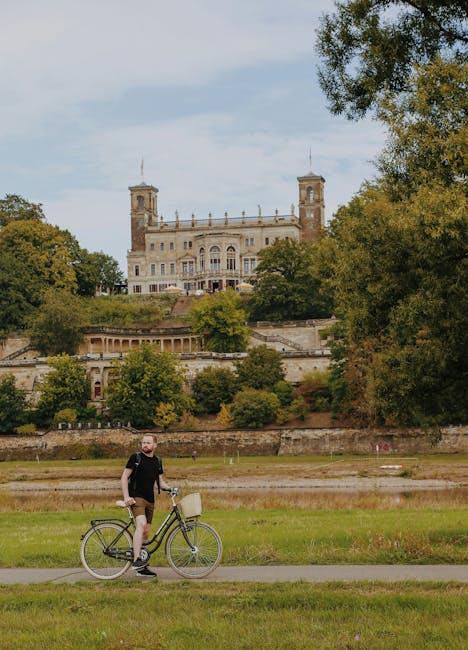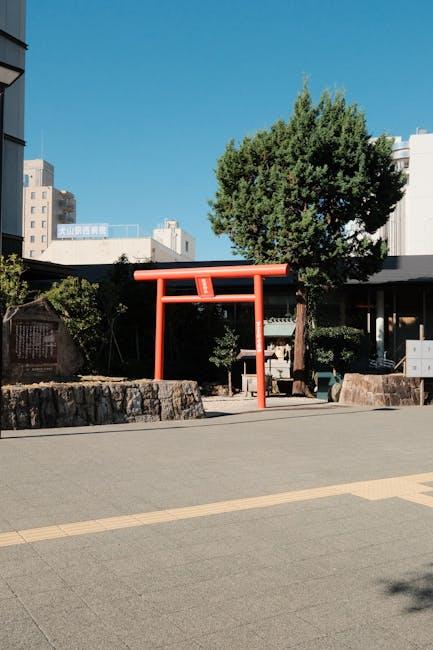In an era where the world feels smaller and more interconnected than ever, the allure of distant lands and their unique cultures beckons travelers from every corner of the globe. The vibrant tapestry of local traditions, woven over centuries, serves as both a magnet for tourists and a cornerstone of community identity. Yet, as the tides of tourism rise, they bring with them the challenge of preserving the delicate fabric of heritage that defines these locales. This article delves into the intricate dance between welcoming the world and safeguarding the essence of place, exploring how communities around the globe are striving to maintain this equilibrium. By balancing tourism and tradition, they aim to ensure that the story of their heritage continues to be told, not just as a relic of the past, but as a living narrative that thrives amidst modernity.
Cultural Custodianship in the Age of Travel
In an era where travel is more accessible than ever, the guardians of cultural heritage face a delicate balancing act. Local communities are tasked with preserving their unique traditions while accommodating an influx of visitors eager to experience their cultural tapestry. As tourists flock to sacred sites and traditional festivals, there’s a pressing need to protect the authenticity of these cultural treasures. This involves fostering a dialogue between tourism stakeholders and indigenous communities to ensure that the economic benefits of tourism do not eclipse the intrinsic value of cultural heritage.
- Promote responsible tourism: Encourage visitors to respect local customs and traditions, ensuring that their presence does not disrupt the cultural fabric.
- Support local artisans and businesses: By purchasing locally made products, tourists can contribute to the economic sustainability of cultural practices.
- Educate and engage: Tourists should be informed about the historical and cultural significance of the places they visit, fostering a deeper appreciation and understanding.
Preserving local heritage in the age of travel is not just about safeguarding the past; it’s about creating a sustainable future where cultural diversity can thrive alongside global connectivity. The challenge lies in finding innovative ways to harmonize these seemingly disparate worlds, ensuring that tourism enhances rather than erodes the vibrant tapestry of human culture.

Embracing Heritage: A Guide for Tourists and Locals
In the modern world, the delicate dance between tourism and tradition requires a mindful approach. Communities rich in culture face the challenge of opening their doors to the world while maintaining the essence of their heritage. This balance can be achieved by fostering a respectful exchange between visitors and locals. Tourists can embrace local customs by engaging with cultural experiences that are both authentic and sustainable. This might include participating in traditional festivals, supporting local artisans, and savoring indigenous cuisine prepared with age-old recipes.
For locals, the opportunity to share their stories with a global audience can be both rewarding and empowering. Preservation efforts can be supported by:
- Encouraging educational programs that teach the younger generation about their cultural roots.
- Collaborating with tourism boards to ensure that development respects historical landmarks.
- Promoting local businesses that prioritize cultural integrity over mass production.
By weaving a tapestry of understanding and respect, both tourists and locals can ensure that heritage remains a living, breathing entity, cherished and protected for generations to come.
 Sustainable Tourism Practices for Heritage Conservation”>
Sustainable Tourism Practices for Heritage Conservation”>
Sustainable Tourism Practices for Heritage Conservation
In an era where tourism serves as a significant economic pillar, sustainable tourism practices have emerged as crucial in ensuring that the influx of visitors does not eclipse the authenticity of local heritage. This balance can be achieved through a variety of innovative strategies. Key among these is the promotion of community-based tourism that actively involves local residents in the decision-making process. By empowering communities, we foster a sense of ownership and responsibility towards cultural preservation.
Effective practices include:
- Cultural Workshops: Organizing workshops that educate tourists about the history and significance of local traditions.
- Eco-friendly Infrastructure: Implementing sustainable building practices that blend with the local architecture.
- Controlled Visitor Numbers: Limiting the number of visitors to sensitive sites to prevent over-tourism.
- Promotion of Local Crafts: Encouraging tourists to purchase local crafts and products, providing economic support to artisans.
- Interpretive Signage: Installing informative signage that offers insights into the cultural and historical context of heritage sites.
These practices not only protect the cultural and historical integrity of destinations but also ensure that tourism remains a viable and sustainable source of income for future generations.
 Collaborative Efforts in Safeguarding Traditions”>
Collaborative Efforts in Safeguarding Traditions”>
Collaborative Efforts in Safeguarding Traditions
In an increasingly globalized world, the responsibility of preserving local heritage while embracing tourism has sparked a collective movement among communities, governments, and organizations. These collaborative efforts are crucial in ensuring that the unique cultural identities of regions are not overshadowed by the influx of international influences. Local communities are taking the lead, creating partnerships with tourism boards and cultural preservation groups to develop strategies that promote sustainable tourism without compromising their traditions.
- Community Workshops: Engaging locals in workshops to pass down traditional crafts and practices, ensuring that younger generations remain connected to their roots.
- Collaborative Festivals: Hosting festivals that showcase local culture and invite tourists to experience traditions firsthand, fostering mutual respect and understanding.
- Heritage Conservation Projects: Joint initiatives aimed at restoring and maintaining historical sites, with input and funding from both public and private sectors.
These efforts highlight the importance of inclusivity and cooperation in preserving cultural heritage. By involving multiple stakeholders, including indigenous groups, local businesses, and international bodies, a balanced approach can be achieved, where tourism becomes a tool for cultural enrichment rather than erosion.






























